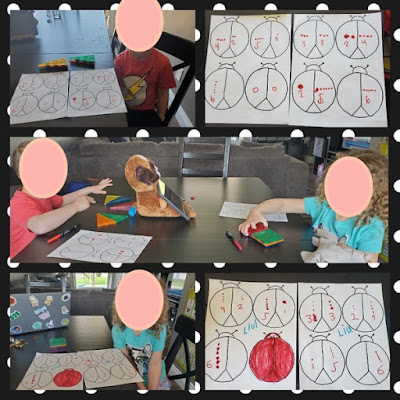Blog Post Activities,
May 27-June 3
Belonging and Contributing
* I hope that you are continuing to be a big helper around the house. As a reminder, here are just a few things that you can be doing to contribute toward making your home a happy place to live.
- Make your bed every morning.
- Put away your toys after you have finished playing with them?
- Help fold the laundry. Sort socks. Put your clothes away in your bedroom.
- Help put dishes in the dishwasher after a meal OR help wash or dry dishes if your parents feel comfortable allowing this.
- Take a cleaning cloth and wipe down all of the doorknobs in your home. This is good for helping STOP the spread of germs. How many doorknobs do you have in your home? Count them.
Self-Regulation and Well-Being
* Enjoy actor Chris Pine as he reads Clark the Shark by Bruce Hale.
Clark is a shark with zing, bang, and boom. Clark zooms into school, crashes through the classroom, and is rowdy at recess. Clark loves life -- but when his enthusiasm is too much for his friends, Clark’s teacher, Mrs. Inkydink, helps him figure out a way to ‘tone it down.’ Clark the Shark celebrates boisterous enthusiasm -- and knowing when it is time to use his indoor voice.
After hearing the story, discuss the following questions with your child…
1) What was your feeling about Clark at the beginning of the story? Was he being a good friend?
2) Why do Clark’s friends stop playing with him?
3) How do the illustrations in the story show that Clark is playing too rough?
4) How is the new kid, Sid the Squid, like Clark?
Clark has trouble in three areas of the school: the classroom, at lunch and on the playground at recess. What are some rules that you know which might help Clark?
What did you learn from this story, Clark the Shark?
Demonstrates Literacy and Mathematics Behaviours
* Boys and girls, this week, we are going to focus on a measurement -- 2 metres. Why, you ask? You may have already noticed that people are being asked to stay 2 metres apart from each other when away from home in order to NOT spread germs that could be harmful to yourself and/or make other people sick. BUT...what does 2 metres look like? How far from another person would 2 metres be if you were standing still? Have a discussion with an adult about this important measurement.
Children will need an ‘anchor’ to help them visualize what a 2 metre distance would be. The length of a queen-sized bed OR the height of a standard door in your home would be about 2 metres. Walk around your house and show them examples of these two anchors. Use a tape measure or metre stick to plot out 2 metres on the floor. Using painters tape, help your child mark out a 2 metre space on the floor in your home. You could also use sidewalk chalk to draw this on your driveway or walkway outside. After representing this distance with tape or chalk, find a non-standard unit of measure (e.g., Q-tips, popsicle sticks, spaghetti noodles, etc…) to base an estimate upon. An estimate is a very good guess referring to how many or how long, tall, etc... For example, how many popsicle sticks do you think it will take to reach across this 2 metre tape line? Write down your estimate. Then, use the non-standard unit to actually measure the length. How close to your estimate was the actual measurement?
Watch this short Youtube video to reinforce this concept. Take a few minutes to review and talk about this from time to time.
Problem Solving and Innovation
* Coding using ScratchJr: This is a FREE downloadable app that will allow your child an opportunity to have lots of fun as s/he explores the world of CODING. Here is some more information about ScratchJr…
What is ScratchJr?
ScratchJr is an introductory programming language that enables young children (ages 5-7) to create their own interactive stories and games. Children snap together graphical programming blocks to make characters move, jump, dance, and sing. Children can modify characters in the paint editor, add their own voices and sounds, even insert photos of themselves -- then use the programming blocks to make their characters come to life.
ScratchJr was inspired by the popular Scratch programming language (scratch.mit.edu), used by millions of young people (ages 8 and up) around the world. In creating ScratchJr, we redesigned the interface and programming language to make them developmentally appropriate for younger children, carefully designing features to match young children's cognitive, personal, social, and emotional development.
Why Did We Create ScratchJr? Coding (or computer programming) is a new type of literacy. Just as writing helps you organize your thinking and express your ideas, the same is true for coding. In the past, coding was seen as too difficult for most people. But we think coding should be for everyone, just like writing.
As young children code with ScratchJr, they learn how to create and express themselves with the computer, not just to interact with it. In the process, children learn to solve problems and design projects, and they develop sequencing skills that are foundational for later academic success. They also use math and language in a meaningful and motivating context, supporting the development of early-childhood numeracy and literacy. With ScratchJr, children aren't just learning to code, they are coding to learn.
ScratchJr is available as a free app for both iPad and Android tablets. For more information about ScratchJr, see scratchjr.org.

















